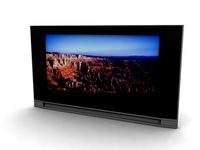Thingiverse

Loggerhead Turtle by LCDS
by Thingiverse
Last crawled date: 3 years ago
Loggerheads were named for their relatively large heads, which support powerful jaws and enable them to feed on hard-shelled prey, such as whelks and conch. The top shell (carapace) is slightly heart-shaped and reddish-brown in adults and sub-adults, while the bottom shell (plastron) is generally a pale yellowish color. The neck and flippers are usually dull brown to reddish brown on top and medium to pale yellow on the sides and bottom.
In the southeastern U.S., mating occurs in late March to early June and females lay eggs between late April and early September. Females lay three to five nests, and sometimes more, during a single nesting season. The eggs incubate approximately two months before hatching sometime between late June and mid-November.
Hatchlings lack the reddish-brown coloration of adults and juveniles. Their flippers are dark gray to brown above with white to white-gray margins. The coloration of the plastron is generally yellowish to tan.
Habitat
Loggerheads occupy three different ecosystems during their lives:
beaches (terrestrial zone)
water (oceanic zone)
nearshore coastal areas ("neritic" zone)
Loggerheads nest on ocean beaches, generally preferring high energy, relatively narrow, steeply sloped, coarse-grained beaches.
Immediately after hatchlings emerge from the nest, they begin a period of frenzied activity. During this active period, hatchlings move from their nest to the surf, swim, and are swept through the surf zone, and continue swimming away from land for up to several days.
After this swim frenzy period, post-hatchling loggerheads take up residence in areas where surface waters converge to form local downwellings. These areas are often characterized by accumulations of floating material, such as seaweed (for example, Sargassum), and, in the southeast U.S., are common between the Gulf Stream and the southeast U.S. coast, and between the Loop Current and the Gulf Coast of Florida. Post-hatchlings within this habitat are observed to be low-energy float-and-wait foragers that feed on a wide variety of floating items (Witherington 2002). As post-hatchlings, loggerheads may linger for months in waters just off the nesting beach or become transported by ocean currents within the Gulf of Mexico and North Atlantic. Work by Lohmann and Lohmann (1994b, 1996) and Lohmann et al. (1999) suggests that loggerheads may continue some oriented swimming in order to keep from being swept into cold North Atlantic currents. Scientists are also remotely tracking neonate loggerhead sea turtles using small, solar-powered satellite tags.
Once individuals get transported by ocean currents farther offshore, they've entered the oceanic zone. Within the North Atlantic, juvenile loggerheads have been primarily studied in the waters around the Azores and Madeira (Bolten 2003). Other populations exist (for example, in the region of the Grand Banks off Newfoundland), but data on these populations are limited. The juvenile turtles around the Azores and Madeira spend the majority of their time in the top 15 feet (5 m) of the water column.
Somewhere between 7-12 years old, oceanic juveniles migrate to nearshore coastal areas (neritic zone) and continue maturing until adulthood. In addition to providing critically important habitat for juveniles, the neritic zone also provides crucial foraging habitat, inter-nesting habitat, and migratory habitat for adult loggerheads in the western North Atlantic. To a large extent, these habitats overlap with the juvenile stage, the exception being most of the bays, sounds, and estuaries along the Atlantic and Gulf coasts of the U.S. from Massachusetts to Texas, which are infrequently used by adults. However, adult loggerheads are present year-round in Florida Bay, an important feeding area, probably because of relatively easy access to open ocean and migratory routes.
http://www.nmfs.noaa.gov/pr/species/turtles/loggerhead.htm
In the southeastern U.S., mating occurs in late March to early June and females lay eggs between late April and early September. Females lay three to five nests, and sometimes more, during a single nesting season. The eggs incubate approximately two months before hatching sometime between late June and mid-November.
Hatchlings lack the reddish-brown coloration of adults and juveniles. Their flippers are dark gray to brown above with white to white-gray margins. The coloration of the plastron is generally yellowish to tan.
Habitat
Loggerheads occupy three different ecosystems during their lives:
beaches (terrestrial zone)
water (oceanic zone)
nearshore coastal areas ("neritic" zone)
Loggerheads nest on ocean beaches, generally preferring high energy, relatively narrow, steeply sloped, coarse-grained beaches.
Immediately after hatchlings emerge from the nest, they begin a period of frenzied activity. During this active period, hatchlings move from their nest to the surf, swim, and are swept through the surf zone, and continue swimming away from land for up to several days.
After this swim frenzy period, post-hatchling loggerheads take up residence in areas where surface waters converge to form local downwellings. These areas are often characterized by accumulations of floating material, such as seaweed (for example, Sargassum), and, in the southeast U.S., are common between the Gulf Stream and the southeast U.S. coast, and between the Loop Current and the Gulf Coast of Florida. Post-hatchlings within this habitat are observed to be low-energy float-and-wait foragers that feed on a wide variety of floating items (Witherington 2002). As post-hatchlings, loggerheads may linger for months in waters just off the nesting beach or become transported by ocean currents within the Gulf of Mexico and North Atlantic. Work by Lohmann and Lohmann (1994b, 1996) and Lohmann et al. (1999) suggests that loggerheads may continue some oriented swimming in order to keep from being swept into cold North Atlantic currents. Scientists are also remotely tracking neonate loggerhead sea turtles using small, solar-powered satellite tags.
Once individuals get transported by ocean currents farther offshore, they've entered the oceanic zone. Within the North Atlantic, juvenile loggerheads have been primarily studied in the waters around the Azores and Madeira (Bolten 2003). Other populations exist (for example, in the region of the Grand Banks off Newfoundland), but data on these populations are limited. The juvenile turtles around the Azores and Madeira spend the majority of their time in the top 15 feet (5 m) of the water column.
Somewhere between 7-12 years old, oceanic juveniles migrate to nearshore coastal areas (neritic zone) and continue maturing until adulthood. In addition to providing critically important habitat for juveniles, the neritic zone also provides crucial foraging habitat, inter-nesting habitat, and migratory habitat for adult loggerheads in the western North Atlantic. To a large extent, these habitats overlap with the juvenile stage, the exception being most of the bays, sounds, and estuaries along the Atlantic and Gulf coasts of the U.S. from Massachusetts to Texas, which are infrequently used by adults. However, adult loggerheads are present year-round in Florida Bay, an important feeding area, probably because of relatively easy access to open ocean and migratory routes.
http://www.nmfs.noaa.gov/pr/species/turtles/loggerhead.htm
Similar models
cg_trader
$50

Turtle loggerhead
... loggerhead
cg trader
3d model turtle loggerhead turtle water ocean, available in obj, fbx, blend, ready for 3d animation and ot
cg_trader
$10

Sea Turtle Hatchling for 3D printing | 3D
...sea turtle hatchling for 3d printing | 3d
cg trader
sea turtle hatchling running for it's life to the ocean.
cg_trader
$2

Loggerhead Sea Turtle poseable
...tle poseable plastic gloves isolated rubberize family fun symbol illustration horizontal people white ocean closeup animals other
cg_trader
$15

3D Loggerhead Sea Turtle
...
cg trader
loggerhead sea turtle caretta oceanic marine reptile tortoise vray pbr green coral reef .stl stl 3d printer metaverse
cg_trader
$10

Loggerhead Sea Turtle 3D
...
cg trader
loggerhead sea turtle caretta oceanic marine reptile tortoise vray pbr green coral reef .stl stl 3d printer metaverse
cg_trader
$4

Swimming pool
...swimming pool pool garden water water beach patio swimming deck swim sea ocean ocean water slide exterior landscape swimming pool
3dwarehouse
free

Gulf/Atlantic Pine Tree
... along the gulf of mexico or the atlantic ocean in the eastern usa. #atlantic #gulf #high #houston #ocean #pine #tall #tree #wood
3dwarehouse
free

Flippers
...flippers
3dwarehouse
water flippers #beach #diving #flippers #ocean #scuba #swim #swimming #underwater #water #wear #yellow
cg_studio
$20

Loggerhead sea turtle3d model
...loggerhead
.obj .max .fbx .3ds - loggerhead sea turtle 3d model, royalty free license available, instant download after purchase.
cg_trader
$20

sea turtle
...le underwater swimming nature wildlife tropical diving wild sea ocean rigged animated loggerhead animals reptile animated animals
Loggerhead
cg_studio
$20

Loggerhead sea turtle3d model
...loggerhead
.obj .max .fbx .3ds - loggerhead sea turtle 3d model, royalty free license available, instant download after purchase.
3d_export
$9

low poly cartoon loggerhead sea turtle
...cluded in the .blend file. the model is clean and alone in the other provided files, centered at origin and has real-world scale.
3d_export
$6

chopped wood low-poly 9 variations
...67x57x33 cm (26.3x22.4x13 inches) 120 v 140 f 200 tr<br>loggerhead - 50x41x40cm (19.6x16.14x15.75 inches) 42 v 60 f 80...
thingiverse
free

Loggerhead Sea Turtle by bill84
...loggerhead sea turtle by bill84
thingiverse
thingiverse
free

Mother Loggerhead Sea Turtle by AuWiMo
...mother loggerhead sea turtle by auwimo
thingiverse
what is cute than a baby turtle? a baby turtle with its mommy!
thingiverse
free

Loggerhead Sea Turtle (poseable) by 4MULE8
...
plate it yourself? dual extruder? soluble supports?
download "loggerhead_unplated.zip" and may the force be with you.
thingiverse
free

Instantly adjustable wrench working prototype by AndresVH
...i saw this wrench online and it looked pretty coolhttps://www.amazon.com/loggerheadtools-bw6-01r-01-adjustable-6-inch/dp/b000jpn2qk/ref=as_li_ss_tl?ie=utf8&qid=1484122231&sr=8-1-fkmr0&keywords=loggerhead+tools+walgreens&linkcode=sl1&tag=buzzdigger-fanpage-20&linkid=eaf23be774df8feb49f95b224279f15e this is a working prototype, it's not strong enough...
thingiverse
free

H-Clip System by 4MULE8
...4mule8 thingiverse this is the clip system from my loggerhead sea turtle model. feel free to adapt it to...
thingiverse
free

Cup with a Shell on it by Pintstein
...3d scanner isn't finished yet so i put a loggerhead sea turtle shell on a cup. my design skills...
Turtle
3d_ocean
$13

Sea turtle
...sea turtle
3docean
lowpoly sea turtle
3d model of sea turtle.
turbosquid
$5

Turtle
...tle
turbosquid
royalty free 3d model turtle for download as on turbosquid: 3d models for games, architecture, videos. (1589591)
turbosquid
$10

Turtle
...urbosquid
royalty free 3d model turtle for download as blend on turbosquid: 3d models for games, architecture, videos. (1228808)
turbosquid
$10

turtle
...
turbosquid
royalty free 3d model turtle for download as obj on turbosquid: 3d models for games, architecture, videos. (1560876)
turbosquid
$15

Turtle
...uid
royalty free 3d model turtle for download as max and fbx on turbosquid: 3d models for games, architecture, videos. (1707353)
turbosquid
$14

turtle
...uid
royalty free 3d model turtle for download as stl and obj on turbosquid: 3d models for games, architecture, videos. (1701199)
3d_ocean
$15

Comic Turtle
...comic turtle
3docean
boy comic funny green low model poly turtle
low poly model of turtle.
turbosquid
$29

Turtle
...royalty free 3d model turtle for download as ma, obj, and fbx on turbosquid: 3d models for games, architecture, videos. (1443824)
turbosquid
$5

Turtle
...oyalty free 3d model turtle for download as tga, max, and fbx on turbosquid: 3d models for games, architecture, videos. (1466275)
3d_ocean
$5

Toy Turtle
...toy turtle
3docean
animal children fur playing stuffed toy teddy teddy bear toy turtle
a little turtle
Lcds
turbosquid
$20

lcd
... available on turbo squid, the world's leading provider of digital 3d models for visualization, films, television, and games.
turbosquid
$15

LCD
... available on turbo squid, the world's leading provider of digital 3d models for visualization, films, television, and games.
turbosquid
$10

LCD
... available on turbo squid, the world's leading provider of digital 3d models for visualization, films, television, and games.
turbosquid
$10

LCD
... available on turbo squid, the world's leading provider of digital 3d models for visualization, films, television, and games.
turbosquid
$2

lcd
... available on turbo squid, the world's leading provider of digital 3d models for visualization, films, television, and games.
turbosquid
$1

lcd
... available on turbo squid, the world's leading provider of digital 3d models for visualization, films, television, and games.
turbosquid
free

lcd
... available on turbo squid, the world's leading provider of digital 3d models for visualization, films, television, and games.
turbosquid
free

LCD
... available on turbo squid, the world's leading provider of digital 3d models for visualization, films, television, and games.
3ddd
$1

Noti Lcd Sofa
...noti lcd sofa
3ddd
noti , lcd
3d model of noti lcd sofa
3d_ocean
$7

Lcd tube wall
...hrome electronic electronic lcd tv videowall
lcd tube wall you can put in the lcd your own texture or movie in it and animate it.
